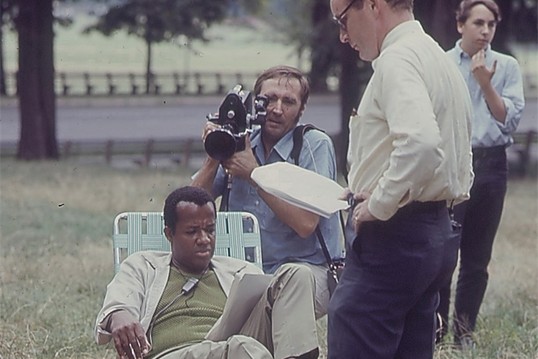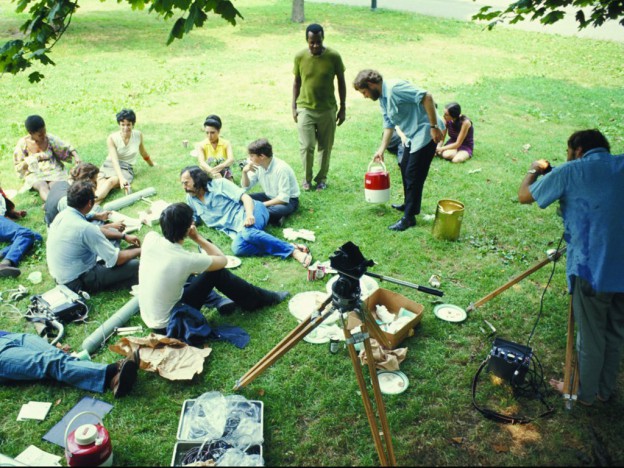Symbiopsychotaxiplasm: Take One
William Greaves, 1969, 75′, soundtrack by Miles Davis
Time: Tuesday April 14, 2015; doors open 19.00, screening 19.30
Location: WORM, Boomgaardsstraat 71, 3012 XA Rotterdam
Admission: €6 (free for PZI students)
This is one in a series of monthly screenings at WORM programmed by Tina Bastajian for the Piet Zwart Institute, Master of Media Design & Communication Department.

It’s the ultimate “reality” piece – Steven Soderburgh
Greaves is a magician; he pulls a rabbit out of a hat, but, being a real magician rather than a fake one, he doesn’t plant the rabbit there but finds it there by chance. — Richard Brody, The New Yorker
Shot in New York’s Central Park in 1968 William Greaves’ film Symbiopsychotaxiplasm: Take One stands as a seminal work in American independent filmmaking and one of the first to effectively use the split screen as a narrative device. The film could be called (amongst many things) a ‘reflexive documentary’ that documents a microcosm of life and film production as seen through a constructed fiction revolving around a unhappy married couples’ personal and sexual woes. This is further underscored by the progressive changes taking place in the late sixties and deftly navigates the political and social climate of the time through its implied dialogue with its cast of ‘actors’ and three roaming 16mm film crews.
One camera is focused solely on the actors scripted audition scenes, the second documents this process, and the third films everything from the the prior and anything else that might work into Greaves’ fictional documentary Over the Cliff. While on location, Greaves explains to an onlooker and to the nearby cast while being simultaneously documented, “I want to make sure that everything that happens on the set, I mean whether it’s off-camera or whether its among the crew or whether its being shot, thematically we should be constantly relating to sexuality …”
Symbiopsychotaxiplasm is a documentary film within another documentary film and so on. This cinematic mise-en-abyme was partially inspired by what is referred to in quantum physics as the uncertainty principle also known as the Heisenberg Uncertainty Principle- that is to say the smallest units of nature found in particles can only calculate the probabilities of their behavior. Greaves reimagined this principle for Symbiopsychotaxiplasm in “how the analog to the electron microscope is the motion picture camera, which is looking down into the psyche and soul of the actor while the actor is performing, and often times it tends to stiffen and destroy the spontaneity and truthful feelings of the actor as the character they’re trying to portray. I thought that would be an interesting element to think about, artistically, creatively.” This uncertainty plays into subsequent scenes with the film crew questioning the motives of the director while secretly filming their ‘rap sessions.’ A film technician implores, “… maybe we are all acting …. alright.”
Symbiopsychotaxiplasm: Take One “invites endless speculation both from the audience and from everyone on the screen.” — Amy Taubin, film critic
Programme notes and introduction to this evening’s screening by Tina Bastajian for the Piet Zwart Institute Media Dept.

